Get a Free WorkTrek Demo
Let's show you how WorkTrek can help you optimize your maintenance operation.
Try for freeMean Time to Acknowledge (MTTA) is a key metric used in incident management. It measures how long a team will respond after an alert is sent out. MTTA is calculated by dividing the total time to acknowledge all incidents by the number of incidents over a set period. MTTA helps organizations track their response speed to issues. A low MTTA shows that a team is quick to act when problems arise. This can lead to faster problem-solving and less downtime for systems and services.
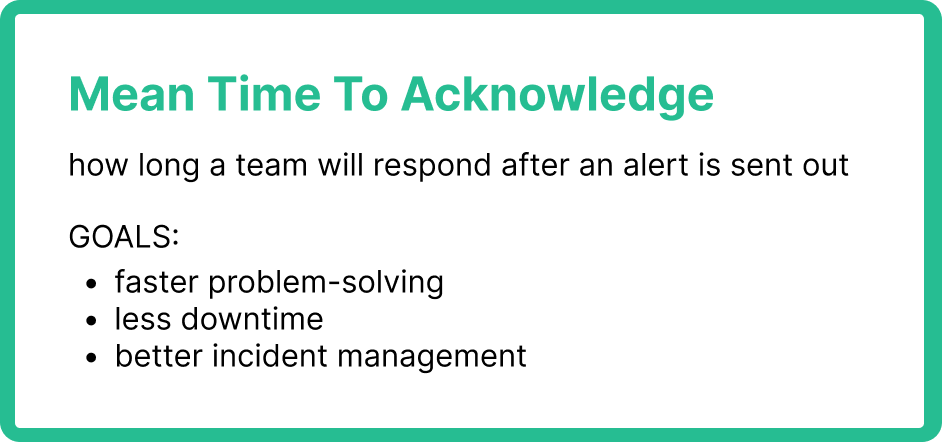
Source: WorkTrek
Tracking MTTA can point out areas where a team needs to improve. It can show if there are delays in noticing or responding to alerts. By working to lower MTTA, companies can boost their overall incident management process. This often results in better service for customers and fewer long-lasting issues.
Listen to a Podcast on MTTA
Understanding Mean Time to Acknowledge (MTTA)
Mean Time to Acknowledge (MTTA) is a key metric used in incident management. It measures the average time between an alert being issued and a team response.
MTTA helps track how quickly organizations react to incidents. A lower MTTA indicates faster response times, which are generally better for resolving issues promptly.
To calculate MTTA, teams add the total time to acknowledge all incidents. They then divide this by the number of incidents over a set period. For example:
- 10 incidents
- 40 minutes total acknowledgement time
- MTTA = 40 minutes ÷ 10 incidents = 4 minutes

Source: WorkTrek
Incident management teams use MTTA to evaluate their performance. It helps identify areas for improvement in alert response processes. A good MTTA varies by industry and incident type. Some common ways to improve MTTA include:
- Automating alert systems
- Prioritizing critical alerts
- Training staff on quick response procedures
- Implementing clear escalation policies
By tracking and optimizing MTTA, organizations can enhance their incident management capabilities. This leads to faster problem resolution and improved service quality.
The Role of MTTA in Incident Management
MTTA helps teams respond faster to issues. It measures how quickly incidents are noticed and addressed.
Defining Incident Response
Incident response is how teams handle problems that pop up. It starts when an alert sounds, and the clock begins ticking as soon as the alert sounds.
MTTA measures the time from alert to when someone says, “I’m on it.” A quick MTTA shows the team is on the ball, ready to jump into action when needed.
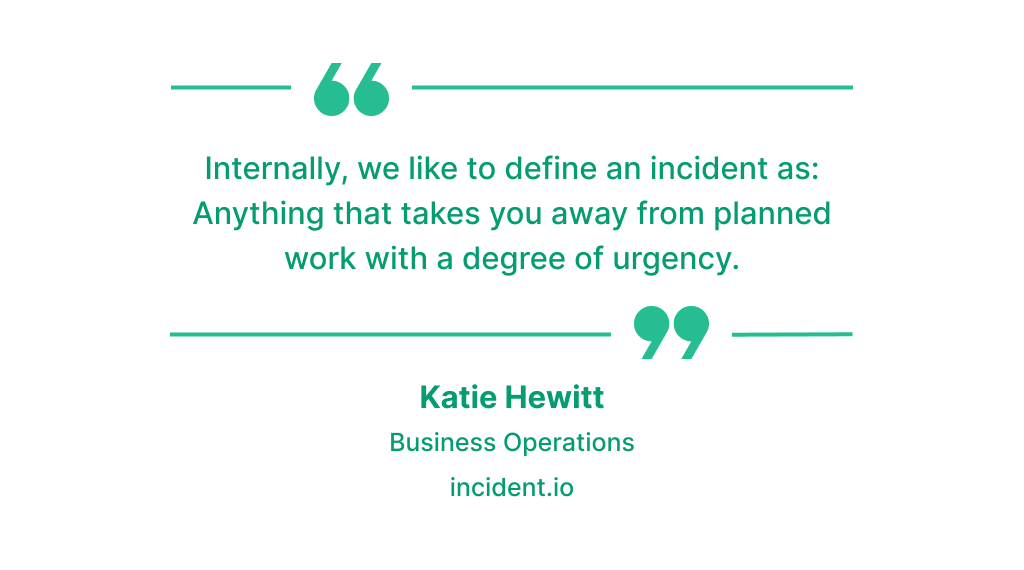 Illustration: WorkTrek / Quote: incident.io
Illustration: WorkTrek / Quote: incident.io
Good incident response means:
• Watching for alerts
• Noticing problems fast
• Getting the right people involved
Teams use tools to track MTTA. These tools help them see how well they’re doing.
The Importance of Quick Acknowledgement
Fast acknowledgment is key for solving problems quickly. When teams react fast, they can fix issues before they get worse.
Quick responses help in many ways:
• Keep customers happy
• Prevent big outages
• Save money
Reliability improves when MTTA is low. It shows that the team is always ready, and customers feel taken care of when problems are spotted quickly.

Illustration: WorkTrek / Quote: Splunk
Incident response teams use MTTA to get better. They look at their numbers and find ways to speed up. Sometimes this means:
• Better alert systems
• More staff on call
• Clearer response plans
A low MTTA helps teams prioritize. They know which issues need attention first.
Related Time-Based Metrics
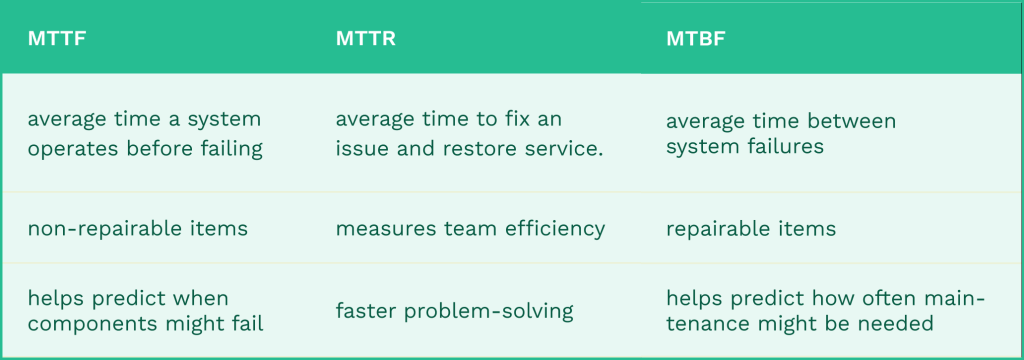 Source: WorkTrek
Source: WorkTrek
Time-based metrics help measure system reliability and team performance. They provide insights into how quickly issues are resolved and how often they occur.
Mean Time to Failure (MTTF)
MTTF measures the average time a system operates before failing. It’s used for non-repairable items that are replaced after failure.
MTTF is calculated by dividing the total operating time by the number of failures. A higher MTTF indicates better reliability.
For example, if a light bulb lasts 1000 hours before burning out, its MTTF is 1000 hours.
MTTF helps predict when components might fail. This allows for proactive maintenance and replacement.
Mean Time to Recovery (MTTR)
MTTR tracks the average time to fix an issue and restore service. It includes the entire process from detection to resolution.
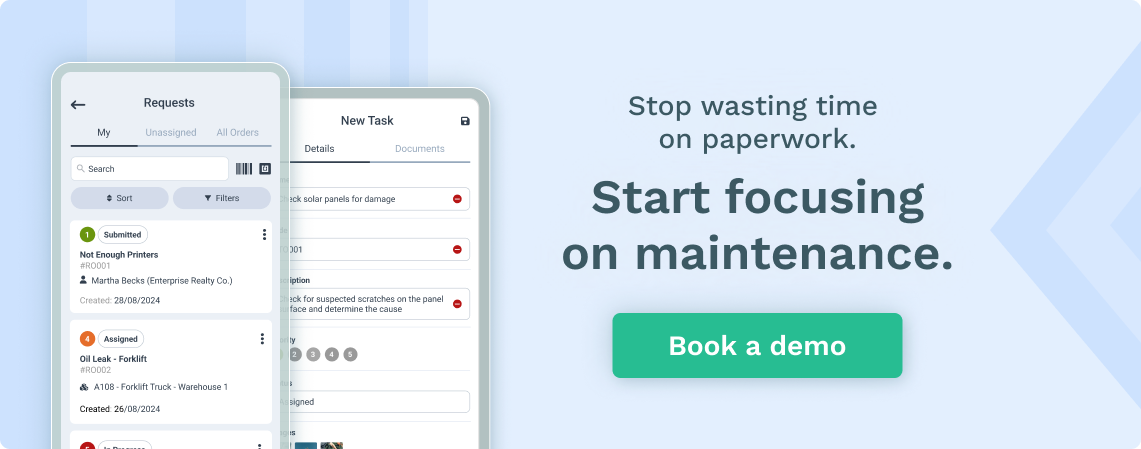
MTTR is calculated by adding up all recovery times and dividing by the number of incidents.
A lower MTTR shows faster problem-solving and better incident management. It’s a key metric for measuring team efficiency.
MTTR can be improved by:
- Automating alert systems
- Creating clear incident response plans
- Providing staff with proper tools and training
Mean Time Between Failures (MTBF)
MTBF measures the average time between system failures. It’s used for repairable items that can be fixed and returned to service.

Illustration: WorkTrek / Quote: intelliarts
MTBF is calculated by dividing total operating time by the number of failures over a set period.
A higher MTBF indicates better system reliability and stability. It helps predict how often maintenance might be needed.
MTBF can be improved by:
- Regular system maintenance
- Identifying and fixing recurring issues
- Using high-quality components
MTBF is often used alongside MTTR to get a full picture of system performance.
Influencing Factors on MTTA Performance
Several key elements impact how quickly teams can acknowledge incidents. These factors shape an organization’s ability to respond promptly and effectively to issues as they arise.
Incident Detection and Alerting
Effective incident detection plays a crucial role in MTTA performance. Reliable monitoring systems help teams spot problems early.
Alert quality is vital. Clear, actionable alerts help teams understand issues quickly, while noisy or vague alerts can slow response times.
Prioritization is key. Critical incidents should trigger immediate notifications. Less urgent issues can be handled later.
Proper alert routing ensures the right people are notified, preventing delays caused by alerts going to the wrong team members.
Communication and Collaboration
Strong communication channels speed up incident acknowledgment. Teams need easy ways to share information and updates.
Clear escalation procedures help route incidents to the right people. This prevents bottlenecks in the response process.
 Illustration: WorkTrek / Data: firstup
Illustration: WorkTrek / Data: firstup
Collaboration tools enable quick discussions and decision-making. Chat apps and video calls can bring teams together fast.
Regular training helps staff recognize and respond to alerts efficiently. This builds the skills needed for quick acknowledgment.
Automation and Tools
Automation tools and CMMS software can significantly reduce MTTA. They can handle routine tasks and speed up human responses.
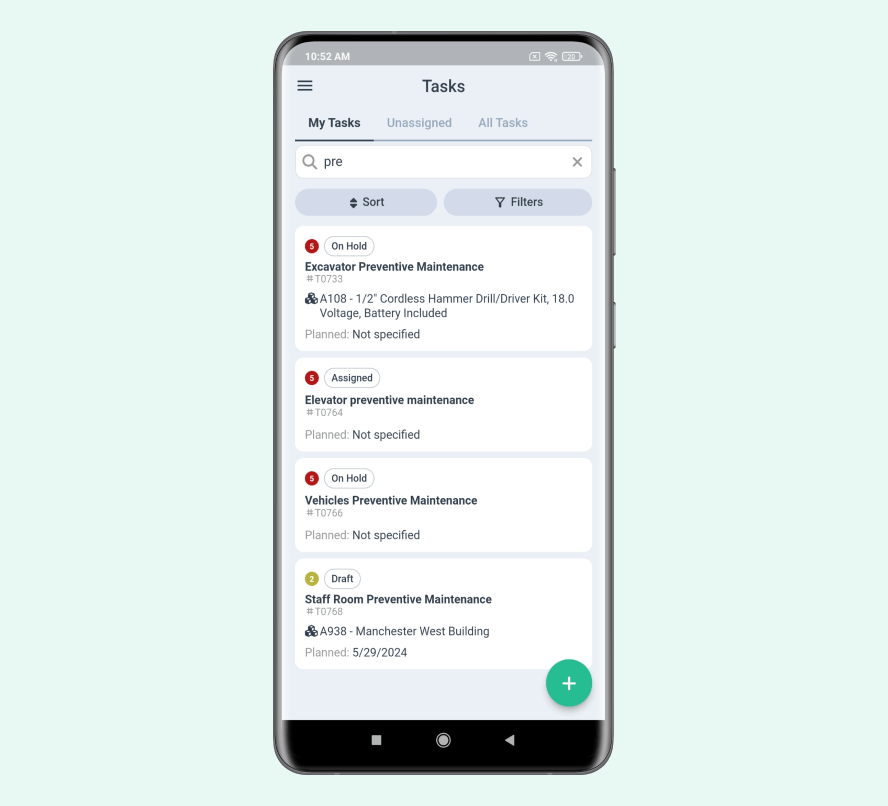
Source: WorkTrek
Incident management platforms centralize information and streamline workflows. This helps teams work more efficiently.
Auto-acknowledgment systems can handle simple issues without human input. This frees up staff for more complex problems.
Integration between tools is crucial. When systems work together smoothly, teams can respond faster.
AI and machine learning can help predict and prevent incidents. This proactive approach can reduce the number of alerts teams face.
Improving MTTA in Your Organization
Reducing the Mean Time to Acknowledgement (MTTA) requires a multifaceted approach. Organizations can implement strategies to speed up incident response and boost efficiency.
Incident Prioritization Strategies
Prioritizing incidents is key to lowering MTTA. Set up a system to rank issues based on their impact and urgency. Use automation to flag critical problems.
Create clear guidelines for each priority level. This helps teams quickly assess and respond to alerts.
Consider these factors when prioritizing:
- Number of affected users
- Business impact
- Potential data loss
- Security risks
Regularly review and update your prioritization system. This ensures it stays relevant as your organization grows and changes.
Effective Alert Management
Good alert management is crucial for improving MTTA. Set up alerts that are clear, actionable, and relevant.
Use these tips to enhance your alert system:
- Reduce alert noise by eliminating false positives
- Group related alerts to avoid alert fatigue
- Include context in alerts to help diagnose issues faster
- Set up escalation policies for unanswered alerts
Implement a centralized alert management tool. This gives teams a single view of all incidents, making tracking and responding quickly easier.
Training and Knowledge Sharing
Invest in ongoing training for your incident response team. This builds their skills and confidence, leading to faster acknowledgment times.
Create a knowledge base with:
- Common issues and their solutions
- Troubleshooting guides
- Escalation procedures

Illustration: WorkTrek / Data: Helpjuice
Encourage team members to share their experiences. Hold regular debriefs after major incidents to discuss what went well and areas for improvement.
Use simulations to practice handling different types of incidents. This helps teams stay prepared and respond more efficiently when real issues arise.

The Impact of MTTA on Key Organizational Outcomes
MTTA affects several crucial areas of business performance. It influences customer relationships, operational efficiency, and equipment maintenance practices.
Customer Satisfaction and Trust
Mean Time to Acknowledge (MTTA) directly impacts customers’ perception of a company’s service quality. Quick acknowledgment of issues shows customers their concerns are heard and valued.
Faster MTTA leads to higher customer satisfaction scores. Customers feel respected when their problems get swift attention. This builds trust and loyalty over time.

Illustration: WorkTrek / Quote: Forrester
Slow MTTA, on the other hand, can frustrate customers. They may feel ignored or unimportant. This can damage relationships and lead to customer churn.
Companies with low MTTA often see better reviews and more positive word-of-mouth. Customers appreciate responsive service and are more likely to recommend such businesses to others.
Operational Efficiency and Performance
MTTA is a key metric for evaluating incident management teams. It shows how quickly teams spot and respond to issues.
Lower MTTA often means faster problem resolution. When teams acknowledge issues quickly, they can start working on fixes sooner, leading to less downtime and better system reliability.
Efficient MTTA processes help maintain high uptime. Systems stay operational for longer periods, boosting overall performance.
Teams with good MTTA tend to be more proactive. They catch small issues before they become big problems, which saves time and resources in the long run.
Preventive Maintenance and Lifespan
MTTA plays a role in effective preventive maintenance strategies. Quick acknowledgment of minor issues helps prevent major breakdowns.
Low MTTA allows maintenance teams to address problems early, extending the lifespan of equipment and systems. Regular, timely maintenance based on quick issue detection keeps assets in good condition.
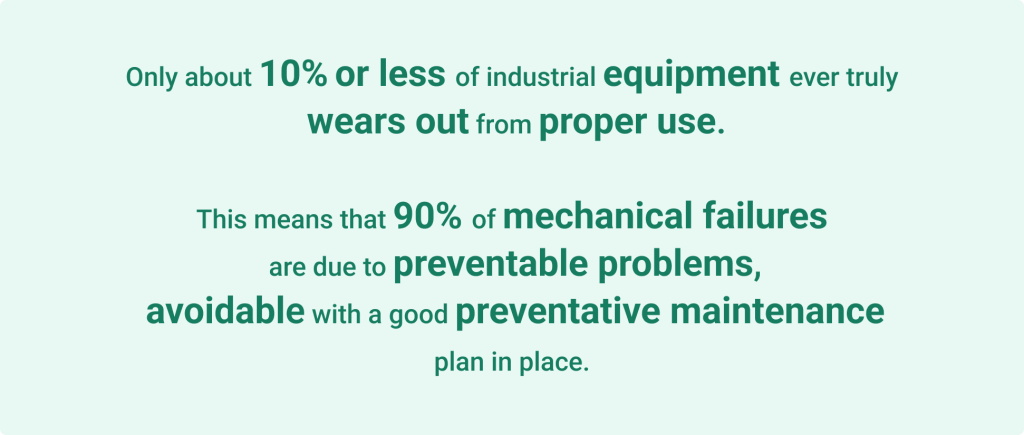
Illustration: WorkTrek / Data: FMX
Companies with efficient MTTA often see lower repair costs. By catching problems early, they avoid expensive emergency repairs or replacements.
Good MTTA practices contribute to better resource planning. Maintenance teams can schedule work more effectively when they know about issues promptly.
Developing an Effective MTTA Strategy
A strong MTTA strategy can boost incident response and cut downtime. It relies on clear procedures and smart technology use.
Establishing Clear Procedures and Expectations
Clear rules help teams respond faster to issues. Set up a system to rank incidents by their urgency.
This helps staff know which problems need attention first.
 Illustration: WorkTrek / Quote: Business News Daily
Illustration: WorkTrek / Quote: Business News Daily
Create a list of who to call for different types of incidents. Make sure everyone knows their role when an alert comes in. Train staff regularly on these procedures.
Set goals for how quickly alerts should be answered. These goals can be part of service level agreements (SLAs). Track if teams meet these goals and use the data to improve.
Good communication is key. Have a plan for how teams will talk to each other during an incident. This can include chat tools or phone trees.
Leveraging Technology and Innovation
The right tools can speed up alert response times. Use a system that sends alerts to the right people right away. Look for one that works on phones and computers.
Automate where you can. Set up rules to sort alerts by type and send them to the right team. This reduces human error and saves time.
Use data to get better. Track key performance indicators (KPIs) like MTTA and mean time to repair. Look at these numbers often to see where you can improve.
Consider AI tools that can predict issues before they happen. These can help teams be ready to act quickly when problems arise.
Test your systems regularly. Run drills to ensure everything works as it should. This will help you identify weak spots in your process.
Conclusion
Mean Time to Acknowledge (MTTA) is a key metric for maintenance organizations. It measures how quickly organizations respond to alerts and incidents.
MTTA tracks the average time between when an alert is created and when someone acknowledges it. A low MTTA indicates fast response times, while a high MTTA suggests delays.
Ultimately, a lower MTTA leads to faster incident resolution. This helps minimize downtime and reduce the impact of security threats or system issues.










